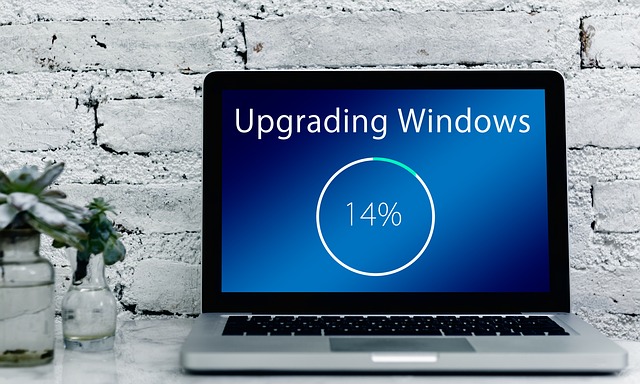In this post, we will show you how to hide your files on Windows Computer like James Bond.
Sometimes, you may need to hide some files and folders on your Windows computer. Also if you have some files and folders on our computer that you don’t want external users to see. After all, we deserve some privacy.
Ever craved the secrecy of James Bond, safeguarding sensitive files from prying eyes on your Windows PC? While you might not have a Q Branch at your disposal, there are covert techniques to achieve a similar level of digital discretion.
In such a case, what you need simply is to hide our files and folders. This post will guide you through the steps involved in hiding files and folders on your Windows PC, and show them again whenever they're needed.
This guide equips you with an arsenal of methods to effectively hide your files, channeling your inner secret agent.
Table of Contents
Understanding Your Options: A Spectrum of Secrecy
Before diving in, it's crucial to understand the varying levels of “hidden” achievable on Windows. Here's a breakdown of the spectrum:
- Hidden Attribute: This basic method simply hides the file from typical browsing within File Explorer. While not truly hidden, it provides a rudimentary layer of obscurity.
- Password Protection: This adds an extra layer of security, requiring a password to access the hidden file or folder. This is more secure than the hidden attribute but still vulnerable to someone with administrative access.
- Encryption: This scrambles the file contents using a password or key, making it unreadable without decryption. This offers the most robust protection but requires additional software or tools.
How To Hide Files On Windows Computer Like James Bond
Method 1: Utilizing the Hidden Attribute (Simple Obfuscation)
This is the easiest method, suitable for casually concealing files you don't need readily accessible. Here's how:
- Navigate to the file or folder you want to hide.
- Right-click on the file/folder and choose “Properties.”
- In the “General” tab, locate the “Attributes” section.
- Tick the checkbox next to “Hidden” and click “Apply” followed by “OK.”
Now, the file/folder disappears from regular File Explorer views.
Revealing Hidden Files: A Peek Behind the Curtain
To access hidden files, follow these steps:
- Open File Explorer.
- Click the “View” tab.
- In the “Show/hide” section, tick the checkbox next to “Hidden items.”
Method 2: Password Protecting Folders with Built-in Tools (Moderate Security)
Windows offers a built-in feature for password-protecting folders within compressed ZIP files. While not foolproof, it adds a layer of security for moderately sensitive data. Here's how:
- Right-click on the folder you want to password-protect.
- Select “Send to” and then choose “Compressed (zipped) folder.”
- Right-click on the newly created ZIP file and select “Properties.”
- In the “General” tab, click on “Advanced.”
- Under the “Encrypt or decrypt” section, tick the checkbox next to “Encrypt with a password.”
- Set your desired password and click “OK” on all open windows.
Accessing Password-Protected ZIP Files:
Double-clicking the encrypted ZIP file will prompt you for the password.
Method 3: Encryption for Maximum Covertness (Advanced Protection)
For top-tier secrecy, consider using third-party encryption software. These tools allow you to encrypt individual files or entire folders, rendering them unreadable without the decryption key. Popular options include:
- VeraCrypt: Open-source and highly secure, offering various encryption algorithms.
- BitLocker Drive Encryption: Built-in on some Windows versions, offering full-drive encryption.
- 7-Zip: Free archiving tool with optional password protection and encryption features.
Using Encryption Software:
The specific steps will vary depending on the chosen software. Generally, you'll select the files/folders, choose an encryption algorithm and password, and initiate the encryption process. Encrypted files typically appear scrambled or gibberish without decryption.
READ ALSO: How A PDF Can Contain Malware
Method 4: Utilizing Hidden Partitions: A Secret Vault (Advanced Users Only)
For the truly paranoid (or those with a lot to hide), creating a hidden partition on your hard drive offers a compartmentalized approach. However, this method involves modifying disk partitions and carries a risk of data loss if not done correctly. It's recommended for advanced users only. Here's a general outline (consult detailed guides for specific instructions):
- Use disk management tools (e.g., Diskpart) to shrink an existing partition.
- Create a new partition within the freed space.
- Format the new partition and utilize encryption software to further secure it.
Accessing Hidden Partitions:
Hidden partition access methods vary depending on the software used. Some create virtual drives, while others require specific tools to mount the hidden partition.
Beyond Hiding: Additional Stealth Techniques
Here are some bonus tips for maintaining operational secrecy:
- Utilize Steganography: This technique hides data within seemingly innocuous files like images or audio. While not foolproof, it can add an extra layer of obscurity for casual snooping. There are steganography tools available that can embed your files within image formats like PNG or WAV files.
Cloud Storage with Selective Sharing: Cloud storage services like Dropbox or OneDrive offer convenient file storage with selective sharing options. You can create private folders accessible only with a password or specific email addresses.
Portable Encrypted Drives: Carry your most sensitive data on portable external drives secured with hardware encryption. These drives require a physical key or password to access the data, offering an extra layer of physical security.
Virtual Machines: For ultimate compartmentalization, consider creating a virtual machine – a software-based computer running within your existing Windows system. Store your sensitive files on the virtual machine and encrypt the entire virtual machine disk. This creates a separate, isolated environment for your most confidential data.
Operational Security (OPSEC): Maintaining the Cover
Remember, true secrecy goes beyond hiding files – it's about maintaining good Operational Security (OPSEC) practices. Here are some crucial points:
Beware Social Engineering: Social engineering tricks can lure you into revealing passwords or locations of hidden files. Be cautious of unsolicited emails, phone calls, or messages, even if they appear to come from trusted sources.
Maintain Strong Passwords: Use complex and unique passwords for all your encryption tools and hidden file locations. Avoid using easily guessable passwords or personal information. Consider using a password manager to generate and store strong passwords securely.
Minimize Digital Footprints: Be mindful of the digital traces you leave behind. Avoid storing highly sensitive data on unsecured networks or public computers.
Regular Backups: Even with the best security measures, unforeseen events can occur. Regularly back up your encrypted files to a secure location in case of hardware failure or data loss.
READ ALSO: How Do You Tell If A Clock Is A Camera?
How To Hide Files On Windows Computer: FAQs
How can I hide a file on my computer?
There are three main methods for hiding files on Windows:
Hidden Attribute: Right-click on the file, select “Properties,” and tick the “Hidden” checkbox under the “General” tab. This makes the file invisible in typical File Explorer views.
Password Protection (Moderate Security): Compress the folder you want to hide into a ZIP file and set a password during the compression process. This adds a layer of security but requires the password for access.
Encryption (Advanced Protection): Use third-party encryption software to encrypt individual files or folders. Encrypted files become unreadable without the decryption key, offering the strongest protection.
How do I create a hidden folder in Windows?
Follow the same steps as hiding a file: right-click the folder, select “Properties,” and tick the “Hidden” checkbox under the “General” tab.
How do I make Windows files private?
There's a difference between hiding and making files truly private. Hiding offers basic obscurity, while true privacy requires encryption. Utilize encryption software (mentioned above) to encrypt files, making them unreadable without the decryption key.
How do I hide the contents of a file?
Hiding the file itself hides its contents. However, for additional security, consider encryption, which scrambles the file contents, rendering them unreadable even if someone finds the hidden file.
How do I hide all files on my desktop Windows 10?
Hiding all desktop files isn't directly possible. However, you can hide the desktop icons themselves. Right-click on an empty area of the desktop, select “View,” and uncheck “Show desktop icons.” This hides the icons, but the files remain accessible through File Explorer.
How do I lock and hide files in Windows 10/11?
Windows doesn't offer built-in functionality to lock and hide files simultaneously. You can utilize encryption software (as mentioned above) to lock the files with a password, essentially achieving both objectives.
Conclusion: Your Own Digital Vault
By employing these techniques and maintaining good OPSEC practices, you can create your own digital vault on your Windows PC, safeguarding your sensitive files from prying eyes.
Remember, absolute secrecy is difficult to achieve in the digital world, but layering these methods significantly increases the barrier to entry for anyone attempting to access your hidden data.
Disclaimer: This guide is for educational purposes only and does not constitute professional security advice. The methods described here have varying levels of complexity and risk. Always ensure you understand the potential consequences before implementing any technique, especially for critical or highly sensitive data.
Note: This was initially published in November 2019, but has been updated for freshness and accuracy.
RELATED POSTS
- Is Windows Defender Good Enough for 2024?
- How To Set Up A New Computer Like James Bond
- Cybersecurity Tips From James Bond No Time To Die Movie
- Confidential: How to Access Windows Computer from a Mac PC
- How To Use Windows 7 Forever
- 10 Best Antivirus For A Basic Laptop
- Effective Cybersecurity Strategies For A Small Business [We Asked 45+ Experts]
About the Author:
Abraham Faisal is a professional content writer. He has a strong passion for online privacy, cybersecurity and blockchain and is an advocate for online privacy. He has been writing about these topics since 2018 and is a regular contributor to a number of publications. He has a degree in Computer Science and has in-depth knowledge of the ever-evolving world of digital security. In his free time, he likes to travel and explore new cultures.
Meet Angela Daniel, an esteemed cybersecurity expert and the Associate Editor at SecureBlitz. With a profound understanding of the digital security landscape, Angela is dedicated to sharing her wealth of knowledge with readers. Her insightful articles delve into the intricacies of cybersecurity, offering a beacon of understanding in the ever-evolving realm of online safety.
Angela's expertise is grounded in a passion for staying at the forefront of emerging threats and protective measures. Her commitment to empowering individuals and organizations with the tools and insights to safeguard their digital presence is unwavering.







